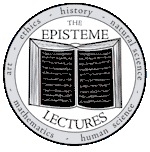In response to today's question about how can you tell why an argument is valid or not I think distribution is key. If you look at the examples today, you can see that all the valid arguments have corresponding distributions in the premisses and the conclusion. For example,
No animals are plants.
Some animals are bugs.
Therefore some bugs are not plants.
Although untrue, this statement is valid. It's mood is EIO and has a format of 3. In the first premise, plants is distributed and in the second premise, bugs is undistributed. Looking at the conclusion, you can see that bugs is once again undistributed whereas plants remains distributed. To make a syllogism valid, the distributions must correspond between the premisses and the conclusion or it won't make sense. In the first syllogism you can't refer to all of one group and then deduce something refering to only some of that group in the conclusion. If that is done, the argument is involving different numbers from groups confusing and wrongly concluding an issue. From the saying we hear everyday: "It's not what you say, it's how you say it." This is a perfect example. In some cases, when the word order is changed, the syllogism loses its validity, even if it is the truth.
Subscribe to:
Post Comments (Atom)



2 comments:
This doesn't entirely make sense. You said (of your example), "Although untrue, this statement is valid."
I disagree--maybe not with your idea, but at least with how it is worded. The form appears to be valid, but the statement ceratinly is not. We've established that for the conclusion in a categorical syllogism to be valid, it must follow logical form. However, the form (and thus, the conclusion) can only be considered valid if, first and foremost, the premises are known to be true.
Jennie writes, "However, the form (and thus, the conclusion) can only be considered valid if, first and foremost, the premises are known to be true."
Actually, this is not the case. Validity is based solely on the rules of constructing the syllogism, e.g. does it have only three terms, is the middle term distributed, etc. You could put pure nonsense into the sentences and still have a valid syllogism.
Truth, on the other hand, is entirely different, and once we begin to explore it, will occupy us for the rest of the course.
The following conditions of truth and validity are possible. The argument is:
1. true, but not valid.
2. valid, but not true.
3. false, and invalid.
4. true and valid.
Post a Comment